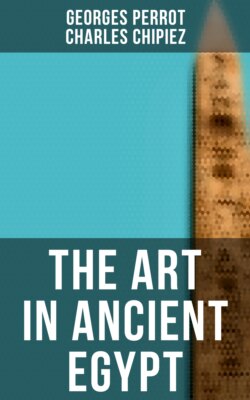Читать книгу The Art in Ancient Egypt - Perrot Georges - Страница 19
На сайте Литреса книга снята с продажи.
§ 4. The Constitution of Egyptian Society—Influence of that Constitution upon Monuments of Art.
ОглавлениеTable of Contents
During the long sequence of centuries which we have divided into three great periods, the national centre of gravity was more than once displaced. The capital was at one time in Middle Egypt, at another in Upper, and at a third period in Lower Egypt, in accordance with its political necessities. At one period the nation had nothing to fear from external enemies, at others it had to turn a bold front to Asia or Ethiopia. At various times Egypt had to submit to her foreign foes; to the shepherd invaders, to the kings of Assyria and Persia, to the princes of Ethiopia, and finally to Alexander, to whom she lost her independence never again to recover it. And yet it appears that the character and social condition of the race never underwent any great change. At the time of the pyramid-builders, Egypt was the most absolute monarchy that ever existed, and so she remained till her final conquest.
"Successor and descendant of the deities who once reigned over the valley of the Nile, the king was the living manifestation and incarnation of God: child of the sun (Se Râ), as he took care to proclaim whenever he wrote his name, the blood of the gods flowed in his veins and assured to him the sovereign power."[57] He was the priest above all others. Such a form of worship as that of Egypt, required no doubt a large sacerdotal class, each member of which had his own special function in the complicated and gorgeous ceremonies in which he took part; but the king alone, at least in the principal temples, had the right to enter the sanctuary and to open the door of the kind of chapel in which the symbolical representation of the divinity was kept; he alone saw the god face to face, and spoke to him in the name of his people.[58] The pre-eminent dignity of this priestly office did not, however, prevent the king from taking his proper share in war or political affairs generally. The army of scribes and various functionaries, whose titles may still be read upon the most ancient monuments of the country, depended upon him for their orders from one end of the country to the other, and in war, it was he who led the serried battalions of the Egyptian army. The king was thus a supreme pontif, the immediate chief of all civil and military officers; and, as the people believed that his career was directed by the gods with whom he held converse, he became to them a visible deity and, in the words of an inscription, "the representative of Râ among the living." His divinity, begun on earth, was completed and rendered perpetual in another life. All the dead Pharaohs became gods, so that the Egyptian pantheon obtained a new deity at the death of each sovereign. The deceased Pharaohs thus constituted a series of gods to whom the reigning sovereign would of course address himself when he had anything to ask; hence the monuments upon which we find living Pharaohs offering worship to their predecessors.[59]
